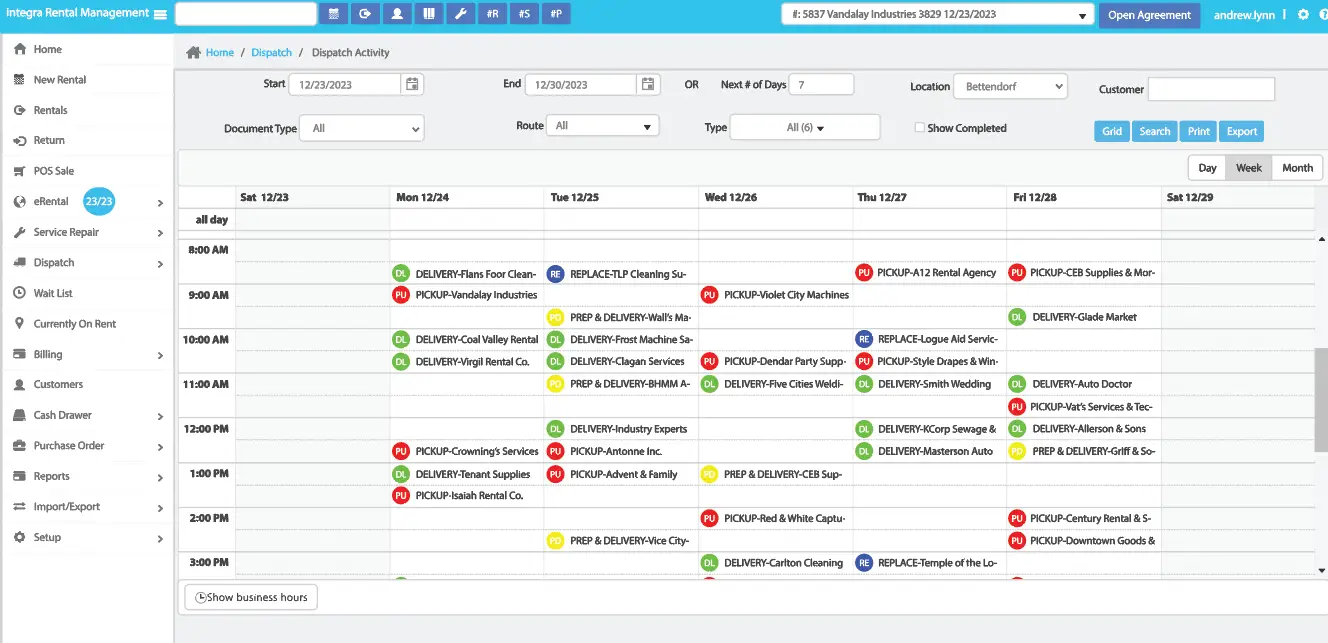
Mastering Efficiency: Best Practices in Inventory Management for Rental Businesses
Efficient inventory management is the lifeblood of a successful rental business. It’s not just about keeping track of your equipment; it’s about optimizing operations, reducing costs, and enhancing customer satisfaction. Let’s explore some of the best practices in inventory management for rental businesses.
Centralized Inventory Tracking
Maintain a centralized system to track all your rental inventory. A digital database or rental management software provides real-time visibility into your equipment’s status, availability, and location.
Regular Audits
Conduct regular physical audits to reconcile your digital records with the actual inventory. This ensures accuracy and helps identify discrepancies or missing items promptly.
Categorize and Organize
Categorize your inventory logically and organize it for easy access. This can be done by equipment type, size, or other relevant criteria. Clearly label storage locations to minimize confusion.
Set Reorder Points
Establish minimum stock levels for each item based on historical demand and lead times. When inventory reaches these points, it triggers reordering to prevent stockouts.

Maintenance Scheduling
Implement a maintenance schedule for your rental equipment. Regular maintenance reduces downtime due to breakdowns, extends equipment life, and ensures items are always in good condition when rented out.
FIFO (First-In-First-Out)
Adopt the FIFO method for managing inventory, particularly for items with expiration dates or perishable components. This ensures that older items are used or rented out before newer ones.
Supplier Relationships
Cultivate strong relationships with suppliers to secure favorable terms, lead times, and pricing. Reliable suppliers can help you maintain a steady supply chain.
Demand Forecasting
Utilize historical data and market trends to forecast demand for various equipment types and seasons. This enables you to adjust your inventory levels accordingly.

Employee Training
Train your staff on proper inventory management procedures and the use of any software or systems you have in place. Well-trained employees are less likely to make errors that can lead to inventory problems.
Return and Inspection Process
Establish a clear process for inspecting and cleaning returned equipment. This ensures that items are in rentable condition for the next customer.
Inventory Rotation
Periodically rotate the position of items within your storage areas to prevent damage from prolonged storage in the same spot.
Real-Time Updates
Ensure that any changes in inventory status, such as rentals, returns, or maintenance, are updated in real-time. This prevents double-bookings and provides accurate information to customers.
Review and Improve
Regularly review your inventory management processes and look for areas of improvement. Feedback from staff and customers can be valuable in making enhancements.
Efficient inventory management not only boosts your bottom line but also enhances your reputation among customers. When they can rely on your business to have the equipment they need when they need it, you’ll build trust and loyalty. By implementing these best practices, your rental business can streamline operations, reduce costs, and provide exceptional service, ultimately leading to long-term success.